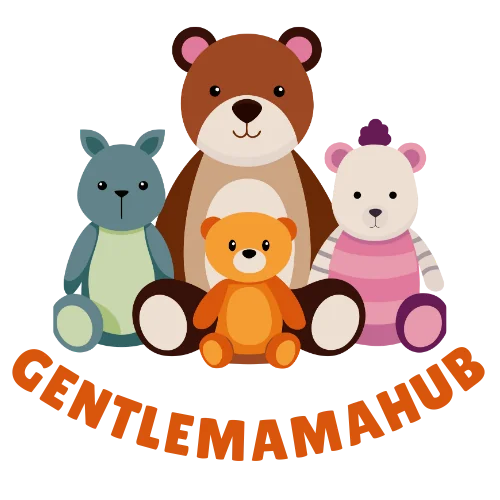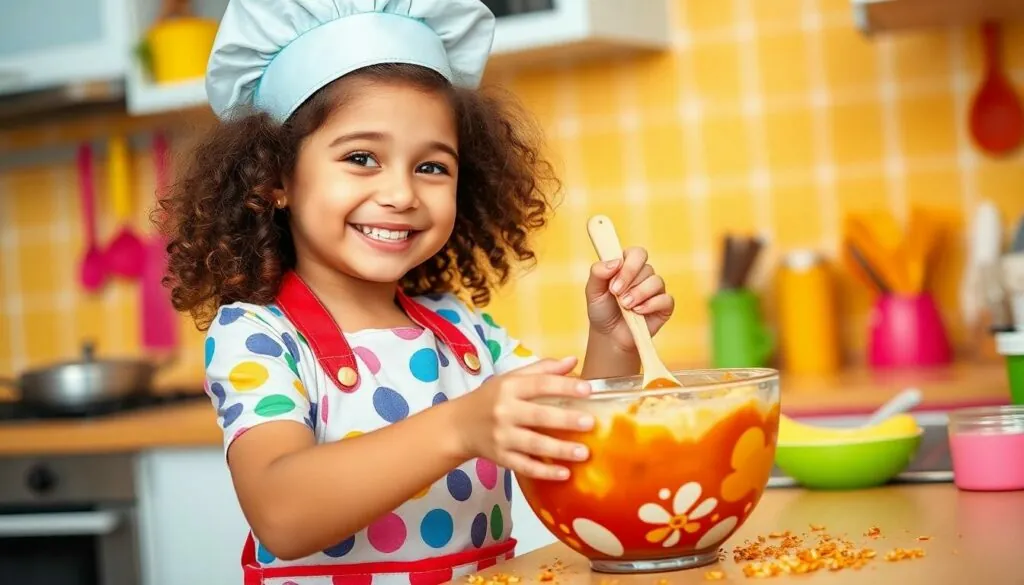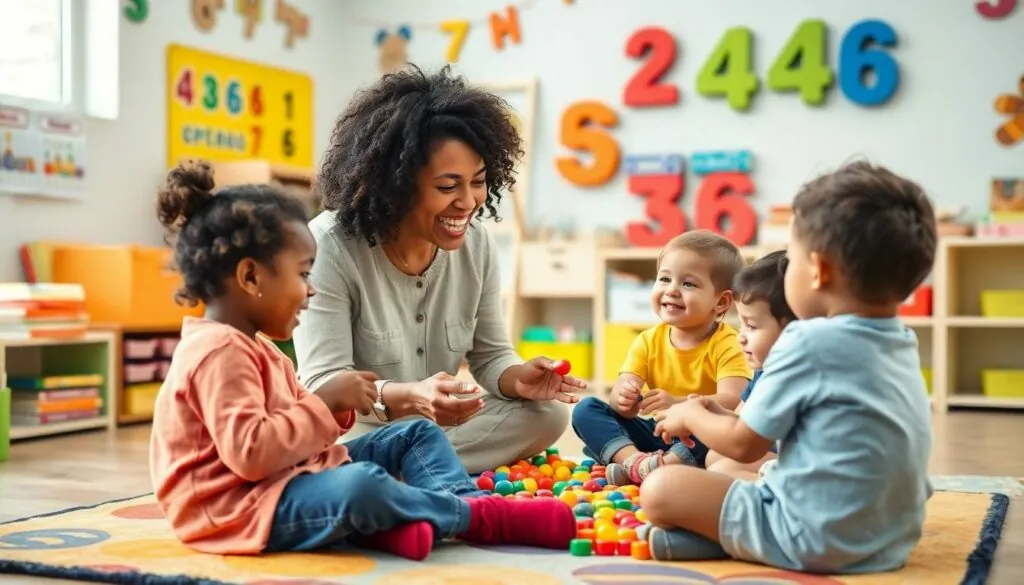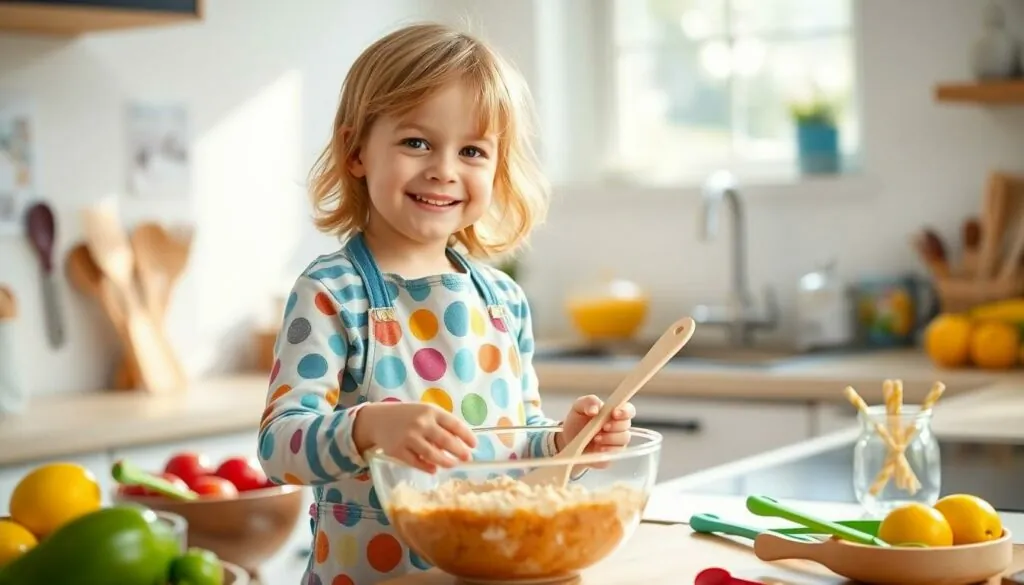Table of Contents
ToggleTransforming little ones into mini master chefs isn’t just about creating culinary delights – it’s about stirring up confidence life skills and precious family memories. Cooking classes designed for kids offer a perfect blend of education entertainment and edible experiments where measuring cups become magic wands and kitchen counters transform into scientific laboratories.
These hands-on experiences go far beyond simple recipe following. Kids learn valuable math skills through measuring ingredients develop fine motor abilities while chopping (safely!) and discover the importance of patience as they wait for cookies to bake. Plus there’s nothing quite like watching a child’s face light up when they create their very first successful dish – even if the kitchen ends up looking like a flour bomb exploded.
Benefits of Teaching Kids to Cook
Teaching kids to cook creates lasting skills that extend beyond the kitchen. The combination of hands-on learning practical skills gives children valuable tools for their future independence.
Building Life Skills and Confidence
Cooking activities develop essential mathematical abilities through measuring ingredients calculating portions dividing recipes. Children master crucial organizational skills by gathering ingredients reading recipes following step-by-step instructions. Kitchen tasks enhance fine motor coordination when children chop vegetables knead dough pour liquids into measuring cups. The process teaches responsibility through kitchen safety proper food handling equipment usage. Each successful dish boosts self-esteem creates a sense of accomplishment motivates children to tackle new challenges.
Learning About Nutrition and Healthy Choices
Kids who cook gain firsthand knowledge about food groups nutritional values balanced meals. Hands-on experience with fresh ingredients helps children distinguish whole foods from processed alternatives. The kitchen becomes a laboratory where children explore different vegetables fruits proteins grains. Cooking activities spark conversations about food sources seasonal ingredients sustainable practices. Children develop better eating habits make informed food choices appreciate the effort behind meal preparation. Active participation in meal planning shopping preparation encourages kids to try new foods expand their palates make healthier decisions.
How to Choose the Right Cooking Class for Your Child
Selecting an appropriate cooking class involves matching the program’s curriculum with a child’s age, interests and skill level. The right class creates an engaging environment where kids feel comfortable learning new culinary skills.
Age-Appropriate Class Options
Age-specific cooking classes offer tailored experiences that match children’s developmental abilities. Classes for ages 3-5 focus on basic tasks like mixing, pouring and decorating with close instructor guidance. Programs for ages 6-8 introduce simple knife skills, measuring ingredients and following basic recipes. Classes designed for ages 9-12 incorporate more complex techniques like sautéing, baking science and meal planning. Teen programs ages 13+ explore advanced skills including knife work, kitchen equipment operation and creative recipe development.
| Age Group | Key Skills Taught | Class Duration |
|---|---|---|
| 3-5 years | Mixing, pouring, decorating | 45-60 mins |
| 6-8 years | Basic knife skills, measuring | 60-90 mins |
| 9-12 years | Cooking techniques, baking | 90-120 mins |
| 13+ years | Advanced skills, meal planning | 120+ mins |
Safety and Supervision Standards
Quality cooking programs maintain strict safety protocols to protect young participants. Professional instructors hold food safety certifications and maintain low student-to-teacher ratios (1:4 for young children, 1:6 for older kids). Classes implement proper sanitization practices including handwashing stations, clean workspaces and separate equipment for each student. Instructors demonstrate safe knife handling techniques, proper use of kitchen tools and appropriate heat safety measures. Emergency procedures include first aid supplies, fire safety equipment and clear evacuation routes.
| Safety Measure | Standard Requirement |
|---|---|
| Student-Teacher Ratio | 1:4 (ages 3-8), 1:6 (ages 9+) |
| Certifications | Food Safety, First Aid |
| Equipment | Individual sets per student |
| Safety Features | Fire extinguishers, first aid kits |
Essential Tools and Equipment for Kid Chefs
Age-Appropriate Kitchen Tools
Kid-sized cooking tools enhance safety while making food preparation accessible. Plastic knives with serrated edges cut fruits without risk of injury. Silicone-handled utensils provide secure grips for small hands. Color-coded measuring cups simplify ingredient portions for young chefs.
Basic Kitchen Equipment List
- Mixing bowls with non-slip bases
- Plastic cutting boards in various colors
- Child-sized aprons with adjustable neck straps
- Step stools with non-slip surfaces
- Easy-grip vegetable peelers
- Rolling pins with smooth bearings
Safety Equipment
Child safety remains paramount in kitchen activities through proper equipment selection. Anti-slip mats prevent accidental falls near cooking areas. Heat-resistant oven mitts protect hands from hot surfaces. Timer alerts help children track cooking durations independently.
Measuring and Prep Tools
| Tool Type | Recommended Features |
|---|---|
| Measuring Spoons | Color-coded sets |
| Mixing Spatulas | Silicone heads |
| Kitchen Scale | Digital display |
| Prep Bowls | Stackable design |
Cleanup Supplies
Maintaining kitchen cleanliness teaches responsibility through organized cleanup routines. Child-sized cleaning gloves protect hands during dishwashing. Countertop squeegees reach across surfaces easily. Spray bottles with diluted cleaning solution enable safe surface sanitization.
Storage Solutions
- Clear containers with snap-on lids
- Labeled ingredient jars
- Kitchen tool organizers
- Recipe card holders
- Equipment hanging hooks at child height
These tools create an environment where children develop cooking skills safely while building confidence in kitchen activities.
Fun and Easy Recipes to Start With
Starting with simple recipes builds confidence in young chefs. These beginner-friendly recipes create successful cooking experiences while teaching fundamental kitchen skills.
No-Bake Beginner Recipes
No-bake recipes provide safe entry points for young cooks ages 3-12. Kids create fruit kebabs by threading strawberries bananas grapes onto wooden skewers. Energy balls combine oats peanut butter honey dried fruit in a mixing bowl without heat. Trail mix stations let children measure portions of cereals nuts dried fruits into individual bags. Yogurt parfaits layer granola berries honey in clear cups for visible creativity. Sandwich assembly teaches spreading cutting skills using cookie cutters for fun shapes. Fresh salsa combines diced tomatoes onions cilantro lime juice in a bowl for mixing practice.
Simple Baking Projects
Basic baking introduces kids ages 6-12 to measuring mixing temperature concepts. Sugar cookies teach rolling cutting decorating skills with colorful frostings sprinkles. Muffins incorporate measuring wet dry ingredients while learning about leavening agents. Pizza dough demonstrates kneading techniques toppings creativity through personal-sized crusts. Chocolate chip cookies practice creaming butter sugar folding in ingredients. Rice Krispie treats show melting techniques simple stovetop cooking under supervision. Mini fruit pies teach crimping edges filling portions using premade crusts.
Making Learning Fun in the Kitchen
Kitchen activities transform into engaging educational experiences when combined with interactive elements. Hands-on cooking projects create natural opportunities for learning while keeping children excited about the process.
Incorporating Math and Science
Cooking activities integrate mathematical concepts through practical applications. Children practice fractions when halving recipes measuring 1/2 cup flour or 1/4 teaspoon salt. Basic multiplication skills develop as kids double ingredient amounts from 2 eggs to 4 eggs. Temperature readings introduce scientific principles as children monitor oven settings at 350°F or watch water boil at 212°F. Chemical reactions come alive during baking experiments when kids observe how baking soda reacts with vinegar or watch yeast make dough rise. Time management skills improve as children calculate cooking durations multiplying 15-minute intervals.
Creative Food Presentation
Food styling encourages artistic expression in the kitchen through color pattern texture. Children arrange rainbow fruit kabobs using strawberries oranges pineapples kiwis blueberries grapes. Face plates feature cucumber eyes carrot noses pepper mouths creating edible artwork. Animal-themed presentations transform sandwiches into butterfly shapes using pretzel stick antennae. Geometric patterns emerge as kids layer parfait ingredients in clear glasses: yogurt granola berries repeat. Cookie decorating sessions utilize natural food coloring piping techniques sprinkle arrangements developing fine motor control. Garnishing techniques introduce herbs edible flowers vegetable ribbons enhancing visual appeal.
Tips for Parents and Instructors
Teaching children to cook combines education with entertainment while building essential life skills. Here’s how to create successful cooking experiences for young chefs.
Managing Expectations
Children learn cooking skills at different paces based on their age developmental stages. A 5-year-old masters basic tasks like mixing ingredients pouring liquids in 15-20 minutes while a 10-year-old completes complex recipes in 45-60 minutes. Setting realistic timeframes prevents frustration letting kids explore at their own speed. Success comes from breaking down recipes into manageable steps matching each child’s ability level. Parents notice improved focus engagement when they align cooking activities with their child’s natural attention span limits.
Creating a Positive Environment
The kitchen transforms into a learning space through thoughtful organization safety measures. Color-coded measuring tools labeled storage containers clear countertop spaces create an inviting workspace for young chefs. Proper lighting ventilation enhance comfort while cooking. Displaying recipe cards step-by-step photos at eye level helps children follow instructions independently. Teachers establish consistent routines starting each class with hand washing ending with cleanup responsibilities. Positive reinforcement through specific praise (“You measured the flour perfectly!”) builds confidence encourages continued participation. Regular breaks for tasting smelling ingredients maintain engagement throughout longer cooking sessions.
Conclusion
Cooking classes offer children more than just culinary skills – they’re gateways to essential life lessons and developmental growth. When kids step into the kitchen they’re not just learning to prepare meals; they’re building confidence exploring math and science and developing crucial life skills.
The journey from basic mixing to creating complete dishes empowers children while fostering independence and creativity. As they master new techniques and recipes they’ll gain nutritional awareness develop problem-solving abilities and create lasting family memories.
Starting with age-appropriate tools and simple recipes opens up a world of learning that extends far beyond the kitchen. Whether through structured classes or home cooking sessions these experiences lay the foundation for healthy habits and lifelong skills that children will carry into adulthood.



